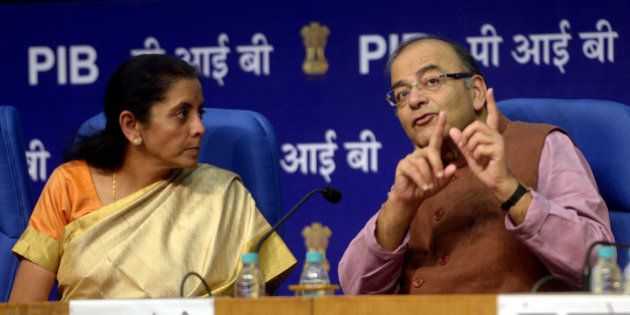
MUMBAI -- Finance Minister Arun Jaitley is likely to earmark higher funds for public investments in the Budget to be presented this weekend, taking advantage from the savings he could mop-up from the steep fall in oil import bill in the past few months, says a report.
"We expect the main theme of the first full Budget of the Narendra Modi government to be higher outlays on public investments, particularly Railways and also roads, financed by ploughing back much of the (0.6 percent of GDP) savings from oil price fall," HSBC India said in a report.
Higher funds for public investment would not only address supply-side deficiencies but also 'crowd-in' private investments, HSBC chief economist Pranjul Bhandari said.
The report also expects the government to revise the goods and service tax roadmap with realistic deadlines.
Bhandari said markets are expecting the government to stick to the ambitious fiscal consolidation path it has inherited and yet revive economic growth.
The inherited fiscal targets of 3.6 percent and 3 percent of GDP for the next two years respectively, come from a time when twin deficits and inflation were dangerously high.
"Since then the macro-economy has improved meaningfully; twin deficits and inflation have fallen rapidly, foreign reserves have piled up and the rupee has stabilized," its economist Prithviraj Srinivas said.
They said against the backdrop of sluggish growth, some room for fiscal stimulus has opened up and believe that the current year's 4.1 percent fiscal deficit target is expected to be met, though by less-than-desirable means of slashing expenditure in the current quarter.
"We believe lowering the deficit to 3.8 percent, instead of 3.6 percent the government had inherited, and using this headroom responsibly would not only curtail the resulting drag on growth, but could also be growth-enhancing if public investments are scaled up," Bhandari said.
Moreover, the additional headroom could be used to break free from the legacy of rolling over expenditure to the next year, in the scramble to meet ambitious targets, the report added.